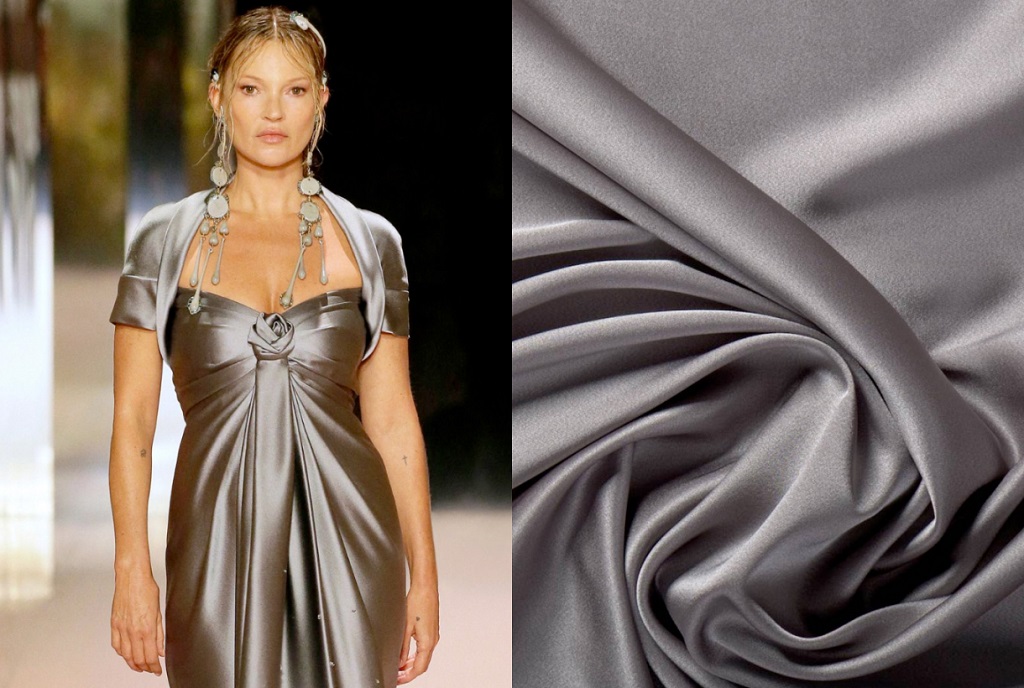Winter is a season of contrasts. As the temperature drops and the world turns frosty, our wardrobes transform to keep us snug and stylish. One fabric that often graces the scene is satin. With its luxurious sheen and smooth touch, satin exudes a sense of elegance that’s hard to ignore. But the question remains: Is satin a suitable choice for the chilly winter months? Let’s embark on a journey to uncover the truth about satin as a winter fabric. This content is presented by Homeyplans.com.
Understanding Satin: The Basics
Before we delve into its winter suitability, let’s get better acquainted with satin. Satin is a woven fabric known for its glossy surface and delightful drape. It’s created using a weaving technique that results in a smooth front and a dull back. This contrast in texture contributes to satin clothes unique charm and versatility.
The Allure of Satin
Satin has long been associated with elegance and sophistication. From evening gowns to lingerie, its lustrous appearance adds a touch of glamour to any outfit. The fabric’s natural shine catches the light in a captivating manner, making it a favorite for special occasions. But when the cold weather arrives, does satin have what it takes to keep us warm?
The Warmth Factor: Satin’s Insulating Properties
Contrary to popular belief, satin can offer more than just aesthetics. While it may not be as inherently insulating as heavy wool or fleece, it does possess some insulating properties. Satin is often made from silk, polyester, or acetate, each with varying degrees of warmth retention. The smooth surface of satin allows it to trap a thin layer of air next to the skin, providing a degree of insulation against the cold.
Layering Potential: Stylish and Practical
One of the secrets to mastering winter fashion is layering. Satin plays well with this concept. Its lightweight nature makes it an excellent choice for layering beneath thicker garments without adding bulk. Consider a satin blouse or camisole as a base layer, enhancing both warmth and style. The smooth texture of satin also prevents it from clinging to other fabrics, making it an ideal choice for layering without compromising comfort.
Embracing the Elegance: Occasion Matters
While satin’s insulating properties can provide a modest level of warmth, its true potential shines when the occasion aligns with its qualities. Satin dresses and outfits are often designed for indoor events and gatherings during the winter months. Think of formal dinners, holiday parties, and indoor weddings. In these settings, where temperature control is in place, satin can keep you cozy while you revel in its luxurious feel.
The Power of Accessories: Pairing with Winter Staples
To make satin work as a winter fabric, the right accessories can make all the difference. A well-chosen jacket, coat, or shawl can provide the necessary warmth while allowing your satin ensemble to take center stage. Think of a tailored blazer or a faux fur stole paired with a satin dress. This combination not only offers protection from the cold but also creates a harmonious balance between warmth and style.
Maintenance Matters: Satin in Winter
Caring for your satin garments during the winter months is essential to ensure their longevity. Satin is a delicate fabric that requires gentle handling. When cleaning, opt for dry cleaning or hand washing to preserve its texture and sheen. Avoid exposing satin to excessive moisture and harsh detergents, as these can compromise its appearance and integrity.
Debunking the Myths: Satin’s Versatility
Satin’s reputation as a fabric exclusively suited for warm weather is a common misconception. While it’s true that satin is favored for its shine and breathability in the summer, it can seamlessly transition into the winter months when chosen and styled thoughtfully. By understanding its insulating properties and combining it with appropriate winter staples, you can enjoy the elegance of satin all year round. Incorporate these ideas into your petite fashion advice: dressing with style and confidence.
Conclusion
In the grand tapestry of winter fabrics, satin undoubtedly has a role to play. Its shimmering surface and smooth touch can elevate your winter wardrobe to new heights of sophistication. While not a heavy-duty insulator, satin’s ability to add a layer of warmth and its compatibility with layering and accessories make it a viable option for winter ensembles. By embracing satin’s versatility and making informed choices, you can confidently include this fabric in your winter fashion repertoire.
Frequently Asked Questions
- Is satin warmer than wool?
While wool is generally considered a warmer fabric due to its natural insulation properties, satin can provide a degree of warmth through its insulating qualities and the air layer it traps next to the skin. - Can satin be worn outdoors in winter?
Yes, satin can be worn outdoors in winter when paired with appropriate outerwear. Adding a jacket, coat, or shawl can help you stay warm while showcasing your satin outfit. - What accessories complement satin in winter?
Accessories like tailored blazers, faux fur stoles, and stylish coats can complement satin outfits in winter, providing both warmth and style. - Can satin garments be machine washed?
It’s best to avoid machine washing satin garments. Dry cleaning or gentle hand washing is recommended to maintain the fabric’s texture and sheen. - Is satin suitable for casual winter outings?
Satin can certainly be worn for casual winter outings, especially if paired with more casual pieces like jeans or knitwear. Just be mindful of the weather and dress accordingly.






